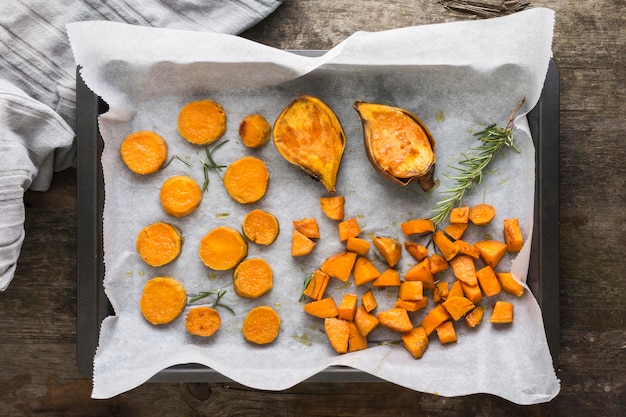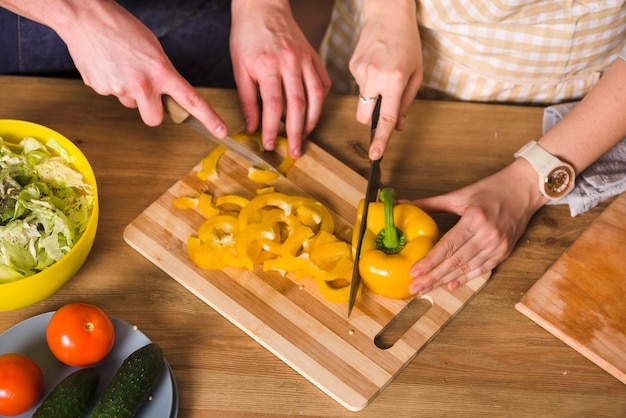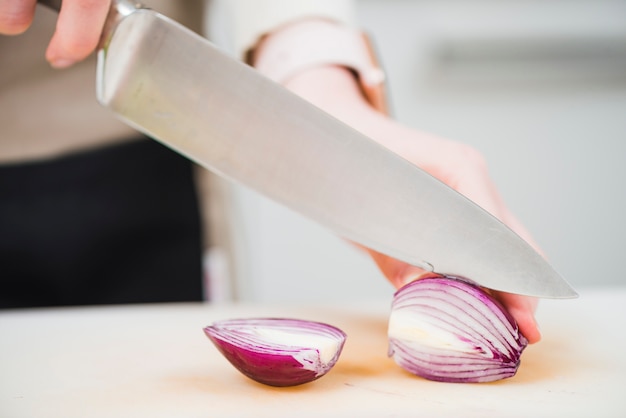I’ve always been a bit of a squash fanatic. There's something so satisfying about transforming a humble squash from its rough exterior to a beautifully tender, caramelized masterpiece. But even with years of experience, I’m always learning new tricks and discovering new flavour combinations.
Today, I'm excited to share my love for oven-roasted squash with you. This is more than just a recipe; it’s a deep dive into the world of squash, covering everything from choosing the perfect variety to mastering the art of roasting and exploring endless flavour combinations. Whether you're a seasoned chef or just starting your culinary adventure, this guide is packed with tips, tricks, and personal anecdotes to help you turn oven-roasted squash into a kitchen staple. So, grab your favourite squash, get ready to get your hands a little messy, and let's get started!
(Part 1) Discovering the Diverse World of Squash

Before we dive into the roasting process, let's take a moment to appreciate the amazing variety within the squash family. From the familiar butternut to lesser-known gems like delicata, each variety offers unique flavours, textures, and even colours. It’s like having a whole rainbow of culinary possibilities right at your fingertips!
1.1 butternut squash: The Versatile All-Star
Let's be honest, butternut squash is a kitchen MVP. Its rich, sweet flavour and buttery texture make it perfect for both sweet and savoury dishes. I'm a sucker for its subtle nutty notes, which add a delightful complexity that keeps me coming back for more. Plus, its sturdy shape and firm flesh make it incredibly easy to chop and roast, making it a pantry staple for many.
1.2 acorn squash: A Bite-Sized Delight
Acorn squash, with its charming, acorn-shaped appearance, is a real charmer. Its smaller size makes it perfect for individual servings, whether it's a side dish or a light lunch. The delicate flavour of acorn squash pairs beautifully with both sweet and savoury ingredients. Its slightly firmer texture holds its shape well during roasting, making it ideal for stuffing with savory fillings. I love the versatility of acorn squash; it’s a real crowd-pleaser.
1.3 spaghetti squash: A Pasta Lover's Dream
Spaghetti squash is a culinary chameleon. Its fibrous flesh, when cooked, separates into strands that resemble spaghetti, making it a fun and healthy alternative to traditional pasta. The mild flavour of spaghetti squash allows it to soak up the deliciousness of any sauce or topping you choose. I’m partial to a simple garlic and herb sauce, but the possibilities are truly endless. If you’re looking for a creative way to get your pasta fix, spaghetti squash is the way to go.
1.4 delicata squash: A Sweet and Tender Treat
Delicata squash, with its beautiful, striped skin, is a true beauty. Its tender flesh and subtly sweet flavour make it a delightful addition to any meal. I love the fact that you can roast delicata squash with the skin on. It becomes edible and adds a delightful crunch to each bite. This variety is a personal favourite for its delicate flavour and versatility. It's easy to cook, and its mild flavour makes it a great blank canvas for any flavour profile.
1.5 kabocha squash: A Japanese Gem
Kabocha squash, with its vibrant green skin and orange flesh, is a treasure from Japan. Its intensely sweet flavour, often described as honey-like, is truly a delight. Its firm flesh holds its shape well during roasting, making it ideal for hearty soups or stews. This variety is a must-try for those seeking a unique and flavourful squash experience. It's a bit more unusual than some of the other varieties, but its vibrant flavour is definitely worth seeking out.
(Part 2) Preparing Your Squash for Roasting: A Step-by-Step Guide

Now that you've chosen your squash, it's time to get your hands dirty and prepare it for the oven. This process is surprisingly straightforward, requiring minimal effort and yielding impressive results. Let's walk through the steps together:
2.1 Wash and Clean
First things first, give your squash a good wash under running water. Remove any dirt or debris clinging to the skin. For squash with a hard rind, like butternut or acorn, you might need to use a vegetable brush to scrub away stubborn dirt. Starting with a clean canvas is essential for achieving the best results.
2.2 Halve and Remove Seeds
Once your squash is clean, cut it in half lengthwise. If you're working with a larger squash, like butternut, you might want to cut it into thirds for easier handling. Use a sharp knife to cut through the skin, then scoop out the seeds and stringy fibres using a spoon. This is a great opportunity to get your hands a little messy, embracing the tactile nature of cooking.
2.3 Season with Care: Unleashing Your Creativity
Now, it's time to add some flavour to your squash. This is where you can really unleash your creativity! I love to sprinkle my squash with a generous pinch of salt and pepper. For a touch of sweetness, a sprinkle of brown sugar or maple syrup works wonders. But don't be afraid to experiment! Here are a few ideas to get you started:
- Herby Delights: Rosemary, thyme, and sage are classic pairings that complement the earthy notes of squash. For a fresh twist, try oregano, parsley, or even a sprinkle of dill.
- Warm Spices: A pinch of cinnamon or nutmeg adds a touch of warmth and sweetness to the squash. For a bit more heat, experiment with a touch of cayenne pepper.
- Citrus Burst: A squeeze of lemon or orange juice adds a touch of tanginess, perfectly balancing the sweetness of the squash.
The possibilities are endless! Remember, the key is to have fun and discover your own unique flavour combinations. It's all about finding what makes your taste buds happy!
(Part 3) Roasting to Perfection: Mastering the Art of Oven-Roasted Squash

With your squash seasoned and ready, it's time to move on to the star of the show: the roasting process. This is where the magic happens, transforming your humble squash into a delicious and satisfying dish. Here’s what you need to know:
3.1 Preheating is Key
Before you place your squash in the oven, preheat it to a temperature of 400°F (200°C). This step is crucial for ensuring that the squash roasts evenly and develops a beautiful caramelized crust. Patience is key; let the oven heat up fully before you introduce your squash. This will help create the perfect environment for that golden-brown, slightly crispy edge.
3.2 Choose the Right Roasting Method: Face Down vs. Cut-Side Up
There are two main methods for roasting squash: face down or cut-side up. Here’s a breakdown to help you decide which method is right for you:
3.2.1 Roasting Face Down: For Intense Caramelization
If you prefer a more intense caramelization and a slightly crispier texture, roast your squash face down. This method allows the natural sugars in the squash to caramelize more effectively. The caramelized edges become a bit sticky, which adds a delightful textural contrast to the tender flesh.
3.2.2 Roasting Cut-Side Up: For Soft and Tender
If you prefer a softer, more tender texture, roast your squash cut-side up. This method concentrates the moisture from the squash on the cut side, creating a more delicate and moist texture. The top will caramelize a bit, but it won’t be as intensely caramelized as the face-down method.
3.3 roasting time: Patience is a Virtue
The roasting time for squash varies depending on the size and variety. As a general rule, smaller squash like acorn will take about 30-40 minutes, while larger squash like butternut can take up to an hour. Here's a helpful table to provide a rough estimate:
| Squash Variety | Approximate Roasting Time |
|---|---|
| Acorn Squash | 30-40 minutes |
| Butternut Squash | 45-60 minutes |
| Spaghetti Squash | 30-45 minutes |
| Delicata Squash | 25-35 minutes |
| Kabocha Squash | 40-50 minutes |
You'll know your squash is done when it's tender when pierced with a fork and the edges are lightly caramelized. But, the best way to know is by checking for doneness!
3.4 Checking for Doneness: The Fork Test
To check if your squash is ready, insert a fork into the thickest part. If it pierces easily and the flesh feels tender, it's done. You can also check the edges for caramelization. They should be slightly golden brown and slightly crispy. Remember, it's always better to err on the side of slightly undercooked, as it will continue to cook a bit even after you take it out of the oven.
(Part 4) Deliciously Diverse squash dishes: Unleashing the Culinary Potential
Once your squash is roasted, the possibilities are endless! You can enjoy it as a simple side dish, or use it as a base for a variety of delicious and creative recipes. Here are a few ideas to get you started. I love the versatility of roasted squash; it's a perfect canvas for any flavour profile.
4.1 Roasted Squash Salad: A Simple Yet Elegant Dish
This is a simple yet elegant dish that showcases the natural sweetness of roasted squash. Simply toss roasted squash with your favourite greens, like arugula or spinach, add a sprinkle of nuts or seeds for crunch, and drizzle with a light vinaigrette. You can also add some crumbled goat cheese or feta for a tangy flavour. This salad is a perfect combination of textures and flavours, making it a satisfying and healthy meal.
4.2 squash soup: A Hearty and Comforting Classic
Roasted squash is a perfect base for a hearty and comforting soup. Blend your roasted squash with vegetable broth, a splash of cream, and your favourite spices. I like to add a touch of ginger or curry powder for extra warmth. You can add other ingredients, like onions, garlic, or even ginger for added flavour complexity. This soup is a perfect winter warmer and can be enjoyed on its own or with a crusty bread.
4.3 Stuffed Squash: A Savory and Satisfying Meal
If you're looking for a more substantial dish, try stuffing your roasted squash. You can use a variety of fillings, from classic sausage and rice to vegetarian options like quinoa and lentils. I love to stuff my butternut squash with a mixture of wild rice, cranberries, and pecans. The sweet and nutty flavour of the stuffing pairs perfectly with the sweet and earthy notes of the squash. It's a true comfort food that's both satisfying and healthy.
4.4 Squash and quinoa bowl: A Healthy and Flavorful Meal
For a healthy and flavourful meal, try a squash and quinoa bowl. Simply combine your roasted squash with cooked quinoa, chopped vegetables, and a protein of your choice, like grilled chicken or tofu. A light drizzle of tahini dressing and a sprinkle of fresh herbs adds a touch of elegance. This bowl is a perfect balance of protein, carbohydrates, and healthy fats, making it a satisfying and nutritious meal. I like to add roasted chickpeas or a dollop of hummus for extra flavour and protein.
(Part 5) The Importance of Seasoning: Elevating Your Squash to New Heights
Seasoning is crucial for unlocking the full potential of your roasted squash. The right combination of herbs and spices can enhance its natural sweetness, add depth of flavour, and create a truly unforgettable culinary experience. Don’t be afraid to experiment and find your perfect flavour pairings.
5.1 Classic Salt and Pepper: A Simple Yet Essential Duo
A simple sprinkle of salt and pepper is always a good starting point. It enhances the natural flavours of the squash and creates a balanced taste profile. Don't be afraid to go a little heavier on the salt, as it will help to bring out the sweetness of the squash.
5.2 Sweet and Savoury Blends: A Touch of Complexity
For a more complex flavour profile, try combining sweet and savoury spices. A pinch of brown sugar or maple syrup, combined with a hint of cinnamon or nutmeg, adds a touch of warmth and sweetness to the squash. You can also experiment with a pinch of cardamom or ginger for an exotic twist.
5.3 Herb Infusions: Adding Aromatic Depth
Fresh or dried herbs can infuse your roasted squash with aromatic flavours. Rosemary, thyme, and sage are classic pairings that complement the earthy notes of the squash. I love to add a sprig of rosemary to the baking dish for an extra layer of flavour. You can also experiment with other herbs, like oregano, parsley, or even a sprinkle of dill for a fresh twist.
(Part 6) Beyond Roasting: Exploring Other Delicious Cooking Methods
While roasting is a classic and versatile method, squash can also be cooked in other ways to create delicious and unique dishes. Here are a few alternative cooking methods to explore. It's all about expanding your culinary horizons and discovering new ways to enjoy this versatile ingredient.
6.1 Sautéing: A Quick and Easy Method
Sautéing is a quick and easy method for cooking squash. Simply cut your squash into small cubes, toss it with oil and your favourite seasonings, and cook over medium heat until tender and slightly caramelized. This method works well with smaller squash varieties like delicata or acorn. You can add some chopped onions, garlic, or even a few chili flakes for extra flavour.
6.2 Grilling: Adding a Smoky Touch
Grilling adds a smoky flavour to your squash. Slice your squash into rounds, brush with oil and seasonings, and grill over medium heat for about 10-15 minutes per side, or until tender and slightly charred. The grill marks add visual appeal and enhance the flavour. This method works beautifully with butternut squash, as the grill marks provide a nice contrast to the smooth surface. I like to serve grilled squash with a drizzle of balsamic vinegar and a sprinkle of fresh herbs.
6.3 Pureeing: Unlocking Versatility in Soups, Sauces, and Dips
Pureeing is a great way to use roasted squash in soups, sauces, and dips. Simply blend your roasted squash with a little broth or cream until smooth. This is a quick and easy way to incorporate the delicious flavour of squash into your favourite dishes. You can use pureed squash as a base for creamy soups, add it to sauces for a touch of sweetness, or blend it with yogurt and herbs for a delicious dip.
(Part 7) Storing and Freezing Roasted Squash: Preserving the Goodness
Once you've roasted your squash, you can store it for later use. Here are some tips for keeping your squash fresh and flavorful. This way, you can enjoy the deliciousness of roasted squash even when you don't have time to cook it from scratch.
7.1 Refrigerate for Up to 5 Days: Keeping it Fresh
Refrigerate your roasted squash in an airtight container for up to 5 days. The flesh will soften slightly over time, but it will still be delicious in salads, soups, or other dishes. You can also add a splash of lemon juice to help preserve its vibrant colour. This is a great way to have a delicious and convenient side dish ready to go whenever you need it.
7.2 Freeze for Longer Storage: Enjoy Squash Year-Round
You can also freeze your roasted squash for up to 3 months. Simply place it in a freezer-safe bag or container. To thaw, remove from the freezer and place in the refrigerator overnight. It can be used directly from frozen in soups or stews. Freezing is a great way to enjoy the bounty of the fall harvest all year round.
(Part 8) FAQs: Frequently Asked Questions About Roasted Squash
Here are some common questions about roasted squash, along with detailed answers. I've been there too, so don't hesitate to ask!
| Question | Answer |
|---|---|
| Can I roast squash with the skin on? | Yes, you can roast some varieties of squash with the skin on, like delicata. The skin becomes edible and adds a delightful crunch to each bite. However, for other varieties like butternut, it's best to remove the skin before roasting, as it can be tough and difficult to eat. |
| What happens if I overcook my squash? | If you overcook your squash, it will become mushy and lose its flavour. Make sure to check for doneness frequently to avoid overcooking. If you do overcook it, you can still use it in soups, sauces, or dips, where the texture won’t be as noticeable. |
| What are some other ways to add flavour to my roasted squash? | You can experiment with different spices, herbs, and even citrus zest. For a sweet and tangy flavour, try adding a squeeze of lemon or orange juice. For a smoky flavour, try adding a pinch of smoked paprika or chili powder. Get creative and have fun with it! |
| How can I prevent my squash from sticking to the baking sheet? | To prevent sticking, line your baking sheet with parchment paper or a silicone baking mat. You can also lightly grease the baking sheet with oil. I find that a light coating of olive oil or avocado oil works best. |
| What are some healthy and delicious ways to enjoy roasted squash? | Roasted squash is incredibly versatile. It can be added to salads, soups, stews, grain bowls, and even baked goods. You can also enjoy it as a simple side dish with your favourite protein. It's a perfect way to add a dose of sweetness, texture, and nutrition to any meal. |
This comprehensive guide provides you with everything you need to know about roasting squash. From choosing the right variety to exploring various cooking techniques and flavour combinations, there's something here for everyone. So, embrace the versatility of squash, get creative in the kitchen, and enjoy the deliciousness of oven-roasted squash!
Everyone is watching

The Ultimate Guide to Cooking Sweet Potatoes: From Roasting to Mashing
RecipesSweet potatoes. Just the name conjures up images of warm, comforting dishes, bursts of vibrant color, and a to...

Caramelized Onions: The Ultimate Guide to Sweet, Savory Perfection
RecipesAh, caramelized onions. Those gloriously sweet, sticky, and utterly addictive little gems. They're the culinar...

Ultimate Turkey Cooking Time Guide: From Raw to Perfectly Roasted
RecipesAh, the turkey. A symbol of festive gatherings, a culinary challenge, and a source of delicious leftovers. But...

Wolf Meat Recipes: A Guide to Cooking Wild Game
RecipesLet's be honest, you don't see wolf meat at your local butcher shop every day. It's a bit of a wild card, but ...

Pigs in a Blanket Cooking Time: How Long to Bake for Perfect Results
RecipesAh, pigs in a blanket. Just the name conjures up images of those delightful little parcels of crispy pastry en...
